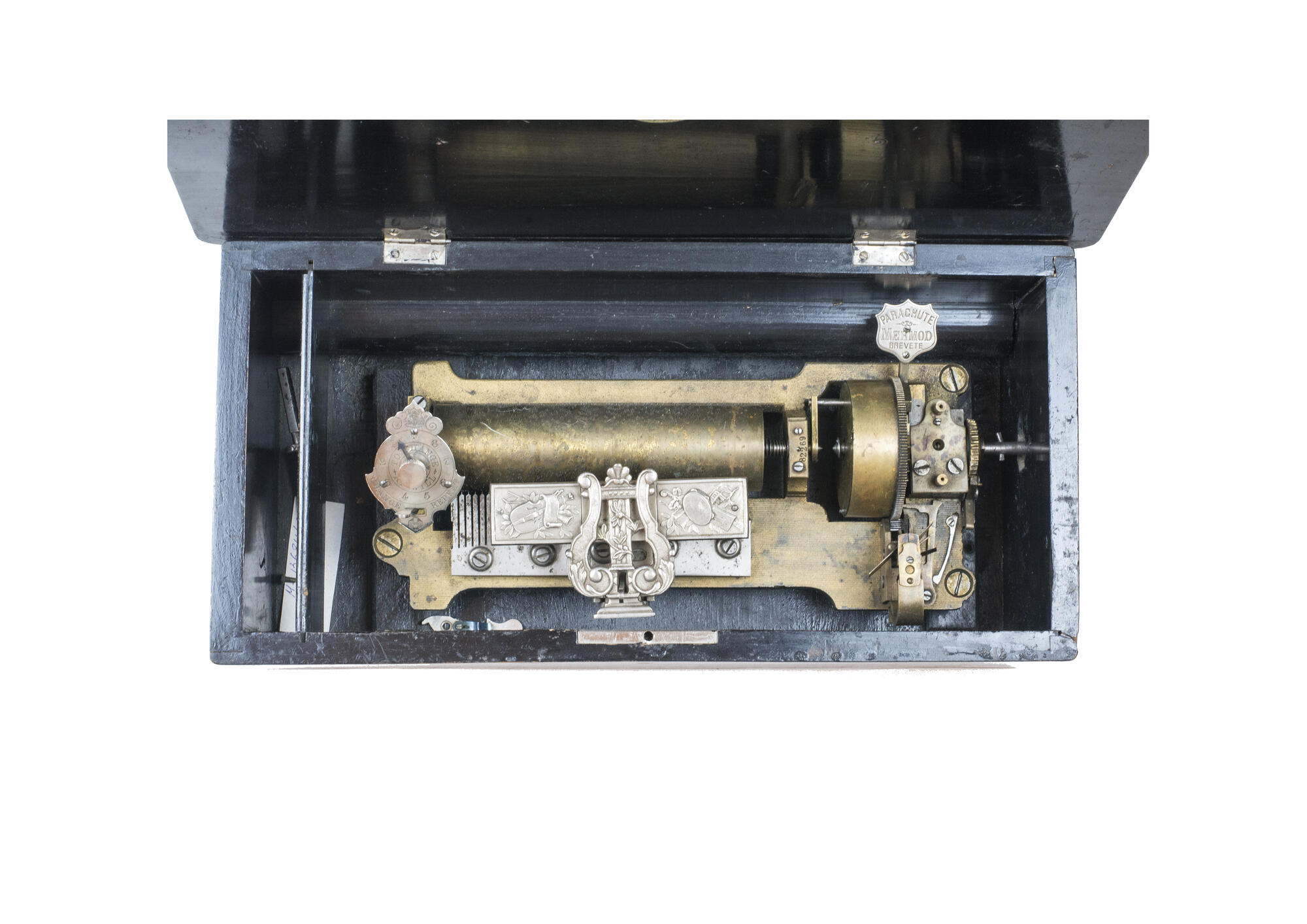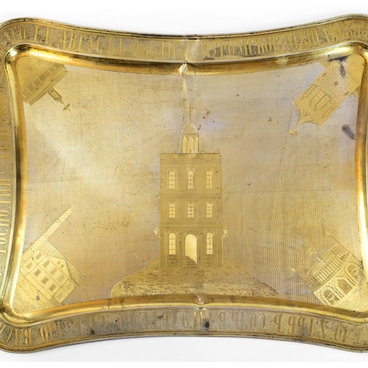А large music box was made in Switzerland in the late 19th century. In 1985, the instrument was donated to the museum by a resident of Murom, M. Malysheva. Its framework was made of wood, the mechanism parts were metal.
The music box mechanism consists of a stand, a special handle — winding key, a comb with teeth and a roller, a cylinder with pins. These parts together produced a melody.
In 1796, the Geneva watchmaker Antoine Favre designed a metal comb that could be used to play a short melody using teeth. At first, they were built into watches and perfume bottles. Then, the mechanisms became more complicated and were placed in separate boxes. Eventually, they acquired a box shape and became a popular interior decoration. In 1815, a music box factory was opened in Switzerland and started exporting music boxes to Russia.
Before that time, there was only live music. Common people had rare access to performances: court musicians gave concerts for the rich and noble ones. When the music box was invented, the situation began to change. However, the first devices were expensive, and not everyone could afford them.
All music boxes worked on the same principle. When the cylinder rotated, the pins hit the comb teeth in a certain order. If a tooth was long, the sound was low, and if it was short, it was higher. A spring mechanism was built into the box that allowed the melody to sound longer. Even then, the sounding time did not exceed a minute, so the boxes were programmed for a small, most recognizable piece of music. When the music ended, the cylinder would return to its original position.
In the late 19th and early 20th centuries, perforated paper tape appeared. Special holes, which were cut in such tapes, corresponded to the notes. Initially perforated paper tape was attached to a piano. Later came automatic pianos and grand pianos that allowed reproducing the play of famous pianists, recorded on perforated paper tape.
After World War I and the economic crisis, the production of music boxes almost ceased. They were gradually replaced by the phonograph, a device for recording and reproducing sound. It was designed by the American inventor Thomas Edison in 1877.
The music box mechanism consists of a stand, a special handle — winding key, a comb with teeth and a roller, a cylinder with pins. These parts together produced a melody.
In 1796, the Geneva watchmaker Antoine Favre designed a metal comb that could be used to play a short melody using teeth. At first, they were built into watches and perfume bottles. Then, the mechanisms became more complicated and were placed in separate boxes. Eventually, they acquired a box shape and became a popular interior decoration. In 1815, a music box factory was opened in Switzerland and started exporting music boxes to Russia.
Before that time, there was only live music. Common people had rare access to performances: court musicians gave concerts for the rich and noble ones. When the music box was invented, the situation began to change. However, the first devices were expensive, and not everyone could afford them.
All music boxes worked on the same principle. When the cylinder rotated, the pins hit the comb teeth in a certain order. If a tooth was long, the sound was low, and if it was short, it was higher. A spring mechanism was built into the box that allowed the melody to sound longer. Even then, the sounding time did not exceed a minute, so the boxes were programmed for a small, most recognizable piece of music. When the music ended, the cylinder would return to its original position.
In the late 19th and early 20th centuries, perforated paper tape appeared. Special holes, which were cut in such tapes, corresponded to the notes. Initially perforated paper tape was attached to a piano. Later came automatic pianos and grand pianos that allowed reproducing the play of famous pianists, recorded on perforated paper tape.
After World War I and the economic crisis, the production of music boxes almost ceased. They were gradually replaced by the phonograph, a device for recording and reproducing sound. It was designed by the American inventor Thomas Edison in 1877.



